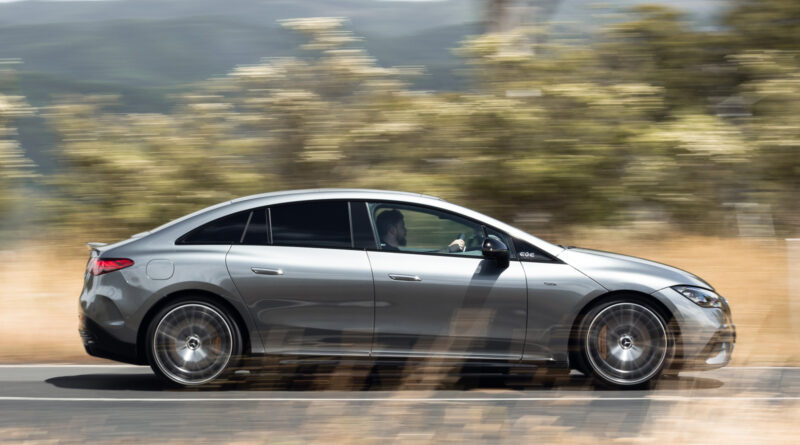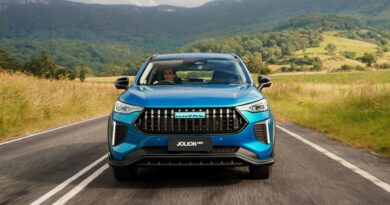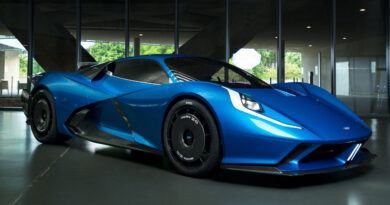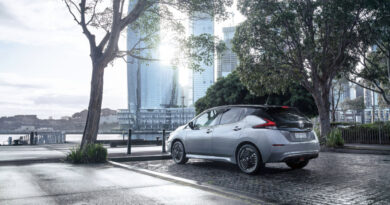Driven: Mercedes-Benz EQE sedan range
Mercedes-Benz’s new EQE is the luxury brand’s all-electric E-Class alternative.
As Benz’s fleet transitions to full electrification (2030 is the current target), the stalwart E-Class as we know it is on borrowed time. So, as “the world’s most loved business saloon”, there’s ample pressure on the EQE to fill its sizeable four-door boots.
Last year, John Carey tested the EQE 350+ (Australia’s not getting this model from launch) and EQE53 4matic+ on some of Europe’s finest roads, but this was our first chance to sample the range on our own territory. Terrible, pock-marked bitumen included.
Of similar size to a Tesla Model S, the EQE launches here with an entry-level 300 for $134,900; 350 at $154,900 and EQE 53 $214,900, all before on-roads.
Electric range (WLTP) is strong: 508km, 462km and 435km respectively.
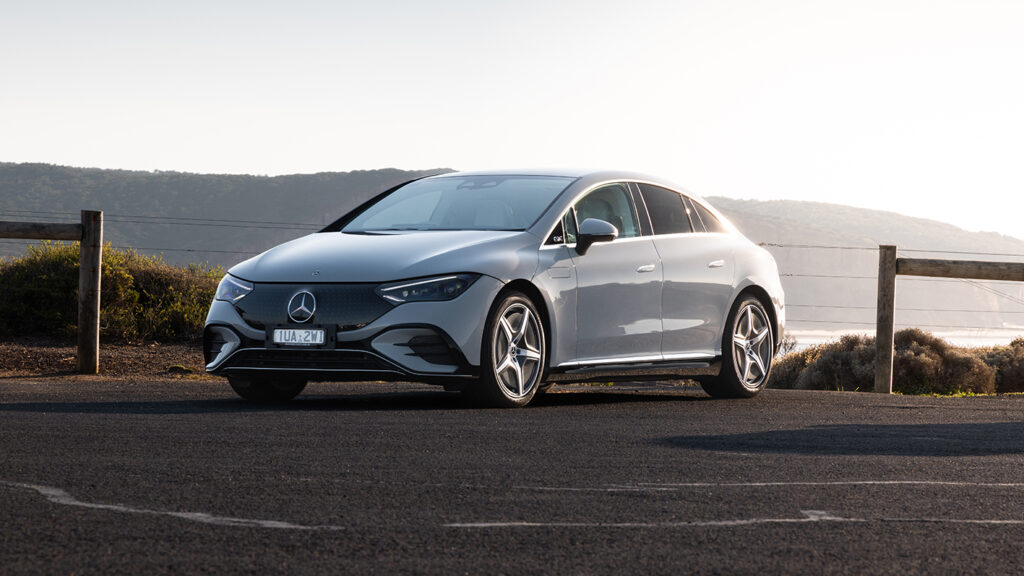
EQE is the second model (after the EQS, your S-Class EV alternative) based on Benz’s EVA2 electric architecture, meaning packaging can be planned without considering a combustion powertrain.
Next to an E-Class it’s 23mm longer and 54mm wider, while its massive 181mm longer wheelbase boosts interior length by 80mm.
In the metal it very much looks a compact alternative to its big brother EQS. Available here only in ($340,000 drive-away) AMG 53 trim, the EQE’s you smaller yet more affordable way into an electric Benz sedan.
Not as aesthetically successful (to this reviewer’s eyes) as the larger EQS, the EQE certainly looks like the bulk of its exterior design was done in Benz’s wind tunnel. This means it’s achieved a superb, slippery 0.22 Cd (the EQS has a record-breaking 0.20 Cd), but its looks polarised opinion.
Its short overhangs, “one-bow line” profile and stretched wheelbase take some getting used to, while a strange shut line from the A-pillar – part of a sealed bonnet – and external flap to re-fill the windscreen washer reservoir don’t help.
It lacks the visual drama of Porsche’s Taycan or Audi’s e-tron GT, but that will suit those favouring the understated.
The 300 and 350 appear identical bar the badging and the latter’s lip spoiler, while the EQE AMG53 has additional bad boy-AMG body styling to up the aggression.
Value
No cheapie entry-level EQE is offered, but looking at the inclusions, buyers aren’t hard done by in any grade. Specification is lengthy and generous, while cabins look properly expensive.
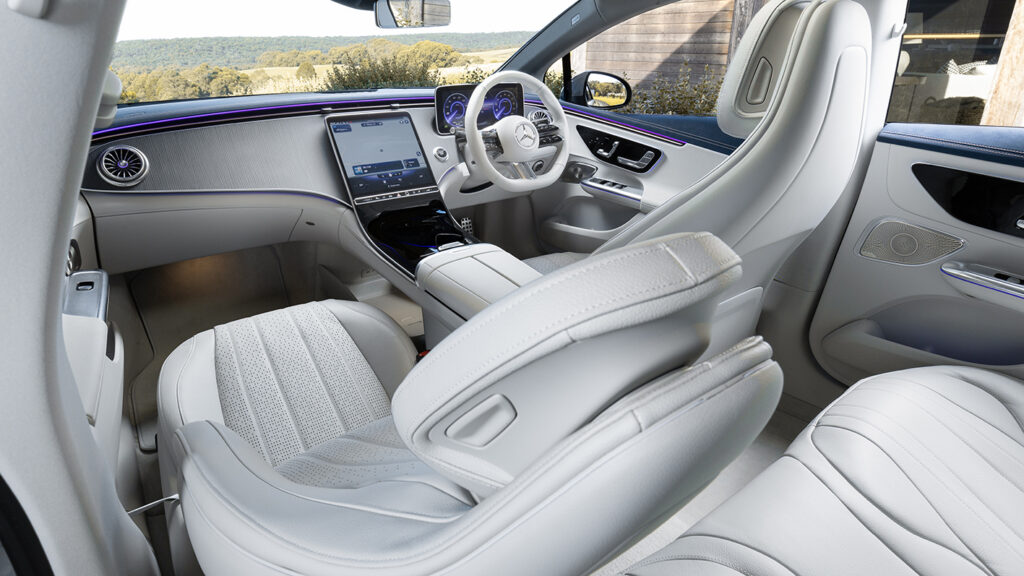
The extra $20,000 to move from EQE 300 to EQE 350 brings no additional specification. The money buys an electric motor over the front as well as the rear axle (upping the power and torque), making the 350 all-wheel-drive.
All EQEs are AMG Line, with key specification being 20-inch alloys with matt grey aero elements, metallic paint, flush door handles, sports-style power and heated leather seats, Nappa leather steering wheel and panoramic sliding sunroof.
Micro mirrors in the cars’ LED headlamps produce 2.6 million illuminated pixels, adding some visual verve next to the rather dull black panel “radiator grille” of the 300 and 350. Thankfully, the AMG 53 uses chrome vertical struts for better front end clout.
Inside, a 12.8-inch infotainment screen with fingerprint scanner for personalised driver profiles is superb, and tech goodness comes with augmented reality navigation, Burmester 3D surround sound system, 360-degree camera and disco-like ambient lighting.
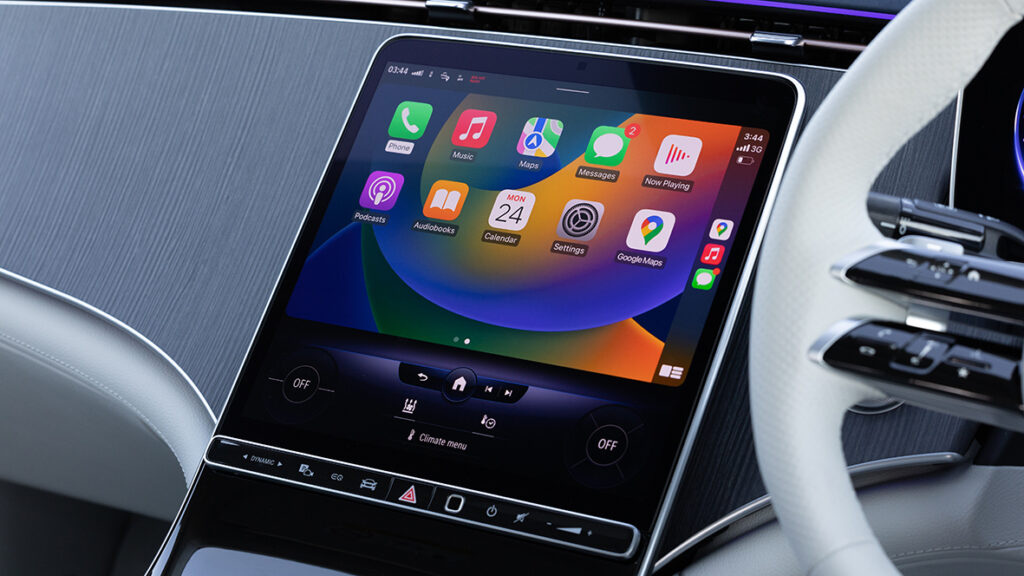
The EQE 53 scores AMG Ride Control+ air suspension with adaptive damping, rear wheel steering, AMG-specific bumpers and side skirts, AMG’s Night Package, AMG braking system with red calipers and 21-inch Y-spoke alloys.
Inside, there’s an AMG steering wheel, climatised sports seats, AMG Nappa leather trim, suede-like trim for doors and instrument panel and carbon fibre trim.
A Type 2 CCS plug on a five-metre cable and domestic socket charging cable are included, but Benz no longer offers a complimentary Chargefox public charging subscription. Its EQ owners simply weren’t using it very much, apparently.
What don’t you get? There are no massage seats as standard, while the EQE 53 misses out on the spectacular dashboard Hyperscreen included in the larger EQS 53.
You can buy the latter for a monumental $15,600 extra. It’s a curved screen unit stretching almost from A-pillar to A-pillar. Its three screens sit under a glass cover and appear to merge into one.
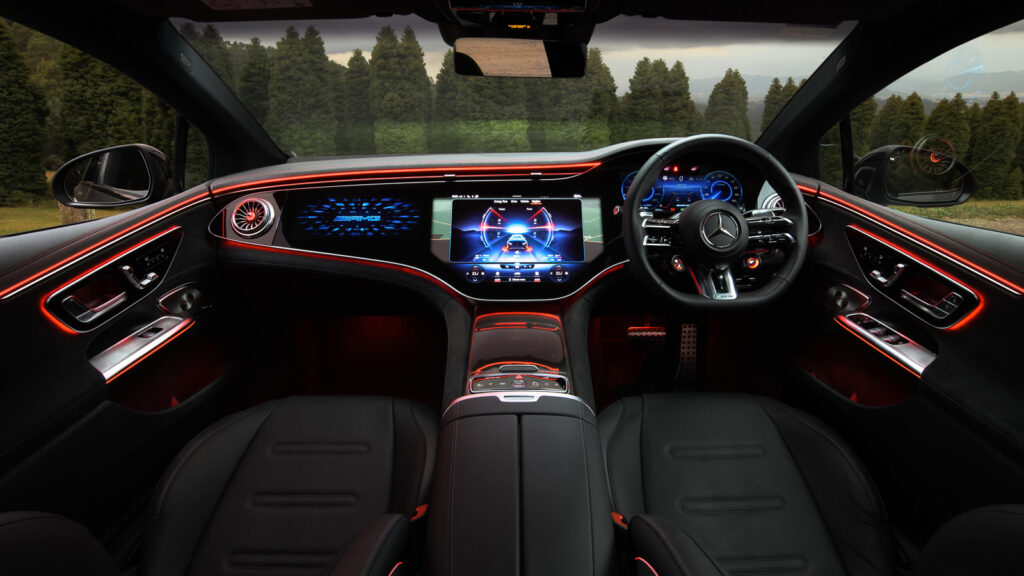
Utterly spectacular to behold, but the standard fit portrait screen really is generous enough. The Hyperscreen is almost too overwhelming and distracting.
The EQE 53 can be had with AMG ceramic composite brakes, bringing giant 440 x 40mm ceramic discs and bronze calipers for an extra $9100.
The EQE is covered by a five-year unlimited kilometre warranty. The high voltage battery gets a separate and class-leading ten-year, 250,000km warranty. This guarantees over 70 percent battery health over that time.
Inside
The giant wheelbase results in an impressively spacious cabin, especially up front.
Rear legroom is very good, but the high-sitting, quite upright rear seats combine with the coupe-like sloping roof to make head room a challenge for taller adults.
As a six-footer, the side of my head rested on the edge of the roof, while forward visibility’s quite obscured due to the one-piece sport seats up front. In the middle seat my head was just touching the glass roof.
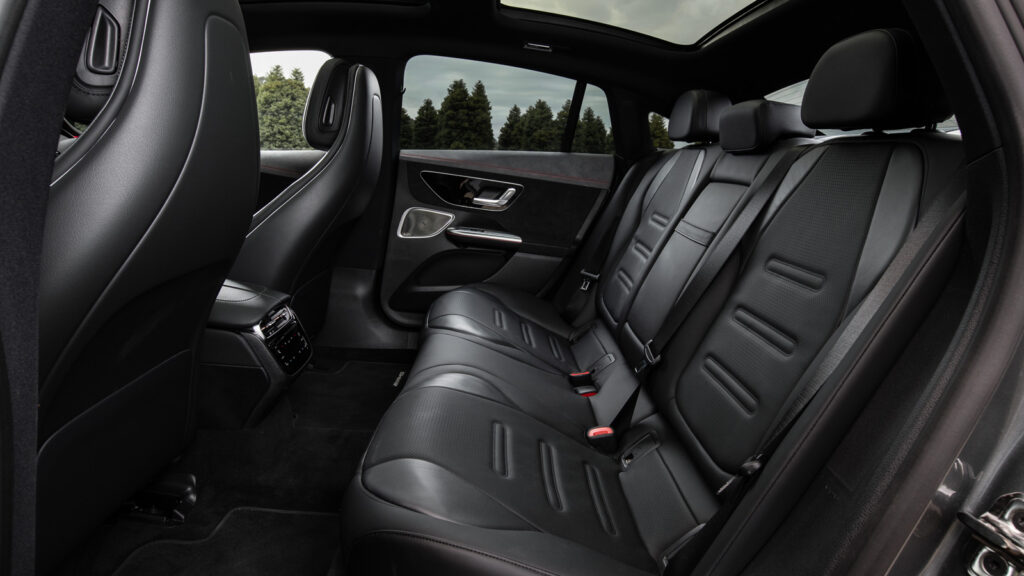
There’s little else to grumble about inside. It’s a lavish, well-built and wow-factor heavy passenger space.
The crystal-clear portrait-orientated infotainment unit blends into a floating centre console which is near devoid of buttons.
The dashboard in front of the passenger is minimalist too, being a single, sloped panel with just a single round air vent at its edge.
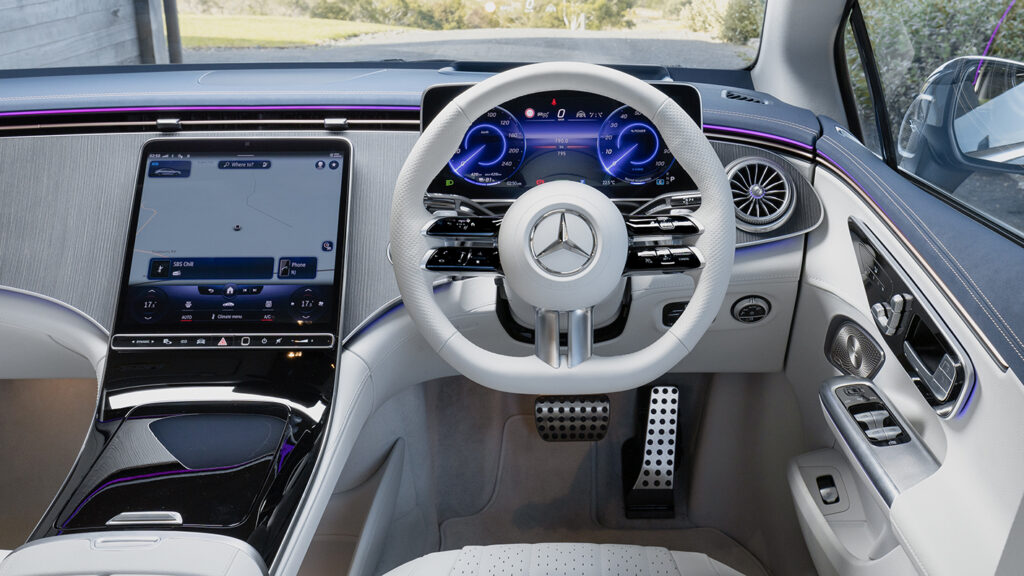
The multi-adjustable sports seats offer an excellent, quite high driving position, while the leather itself and strange eco-feel dash and door tops ooze quality.
The giant panoramic roof boosts the sense of space and light, bettered only by the optional white interior of our test car. It looks incredible, but you’d be brave as hell to pick it, especially if it’s to be a family car. The idea of muddy boots on snow white carpets makes you shudder at the thought.
The digital driver display is pleasingly customisable, but Benz’s insistence on putting all controls and menus through screen or touch buttons is frustrating. Especially when climate control is involved.
When on the move, using swipey steering wheel buttons (there’s a veritable sea of them on the tiller, taking plenty of learning), or prodding at the giant screen means you’re prone to mistakes and taking eyes off the wheel. The MBUX voice assistant covers most things, but can take its time and is far from perfect.
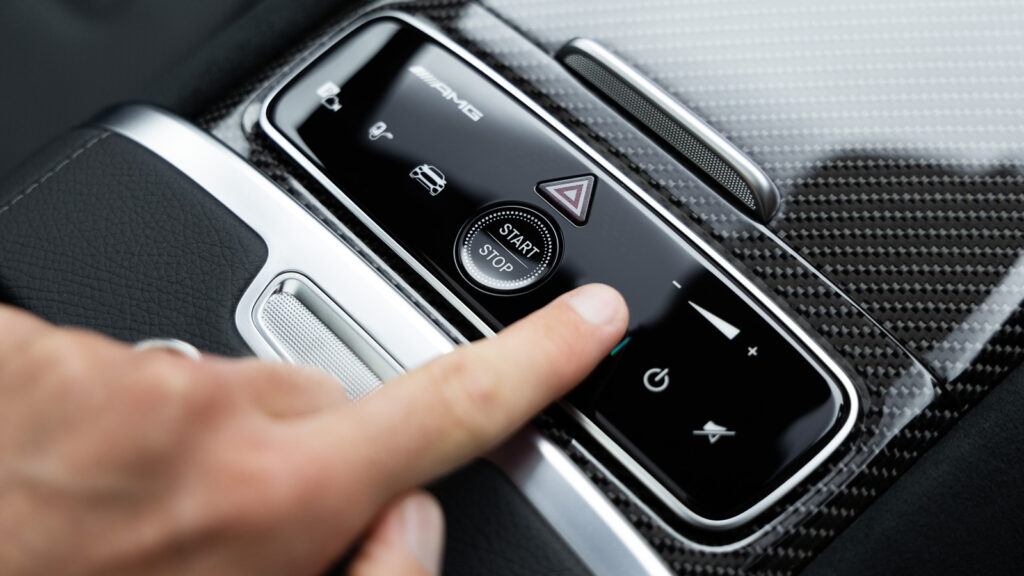
Boot space is fine but nothing more: its 430L is well below the equivalent E-Class’s 540L. And, unlike the larger EQS, the EQE has a fixed rear window and boot lid rather than a liftback tailgate, also robbing you of some practicality.
Charge cable bags in the boot eat into space, and no frunk due to that sealed bonnet also give the competition a space advantage. Why the rear-drive only EQE 300 couldn’t have a frunk is mystifying.
Being EV-only, the EQE’s cabin storage impresses. A rubber pad for wireless phone charging would fit any phablet, while under the floating centre console is space for iPads or small laptops.
The EQE 53 ups the luxe game that bit further with its full Nappa leather interior. A mighty carbon fibre panel in the centre console is very AMG, but if there’s any small complaint, the rotary dial’s button face on the steering wheel (to change drive mode settings) feel a bit too plasticky.
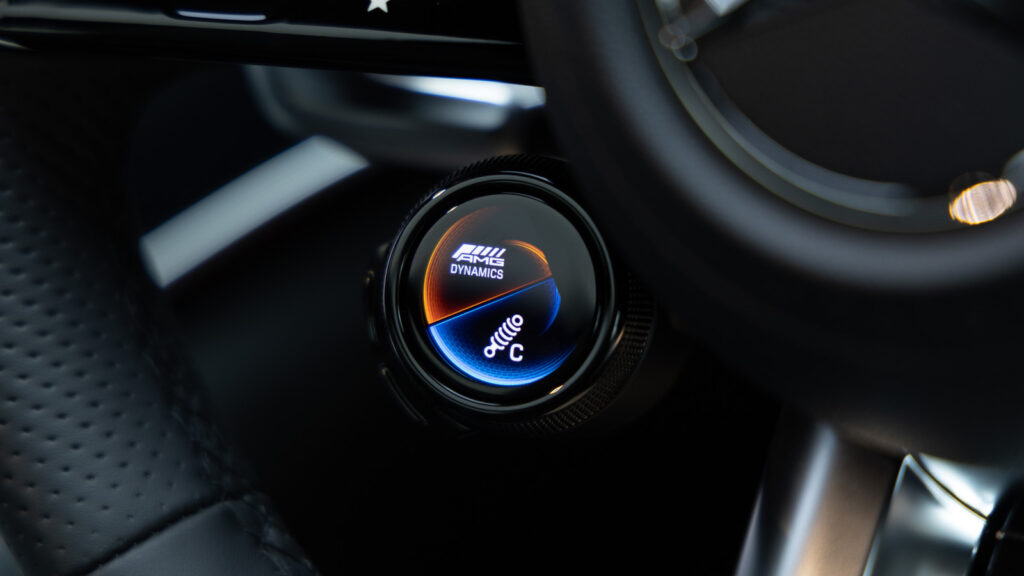
Performance and efficiency
Good grief these EQEs are heavy beasts.
The EQE 300 is 2380kg, the EQE 350 2460kg and the EQE 53 2530kg. Sling four good-sized adults in the latter and you’re asking it to move three-tonnes.
The high torque numbers for each help deal with such heft rather impressively, perhaps most so in the cheapest single-motor rear-drive 300.
While no speed monster, there’s a punchy nature to its power delivery. That 550Nm of instant torque is all most EV drivers would ever need.
The EQE 350 with its 215kW and 765Nm dual motor setup certainly feels quicker, but not dramatically so. And, to my mind, not $20,000 quicker.
It hits 100km/h in 6.3 seconds versus the 300’s 7.3 seconds, which is hardly night and day. As the two cars share specification, unless you insist on all-wheel-drive, it’s hard to make a case for the 350’s $20k premium.
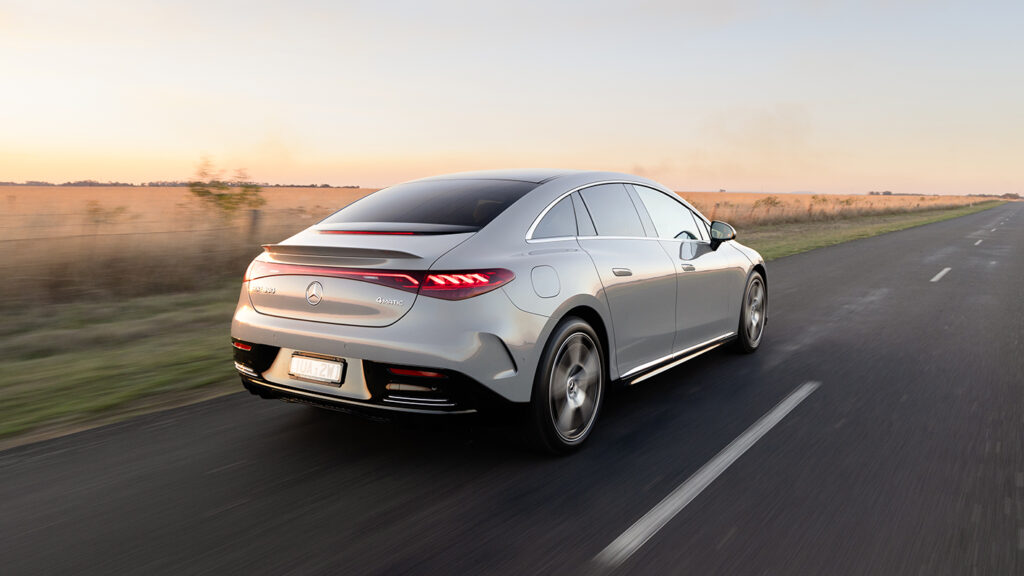
The EQE 53? Well, that’s your performance animal. Floor it and it’ll suck the blood from your face and pin you to the chair. This shouldn’t be possible in a car of this weight, but how often we’re now saying that of these performance EVs.
It’s supercar fast, yes, but it won’t give you the satisfying tingles of a petrol-powered AMG great. That said, 3.5 seconds to 100km/h is rarely boring.
An AMG Dynamic Plus package for an extra $7400 offers a bonkers 505kW and 1000Nm. This now sees the 100km/h arrive in 3.3 seconds thanks to a Race Start launch control.
According to WLTP figures, the respective efficiency of each is 20.1, 22.5 and 23.5 kWh/100km.
On our test – mainly country roads and highways – we saw an average energy consumption of 20.2kWh/100km (EQE 300); 21.1 kWh/100km (EQE 350); and 26kWh/100km (EQE AMG 53).
The AMG 53 aside (perhaps we pedalled it a bit hard), matching the claimed WLTP range figures of 508km / 462km / 435km should be attainable.
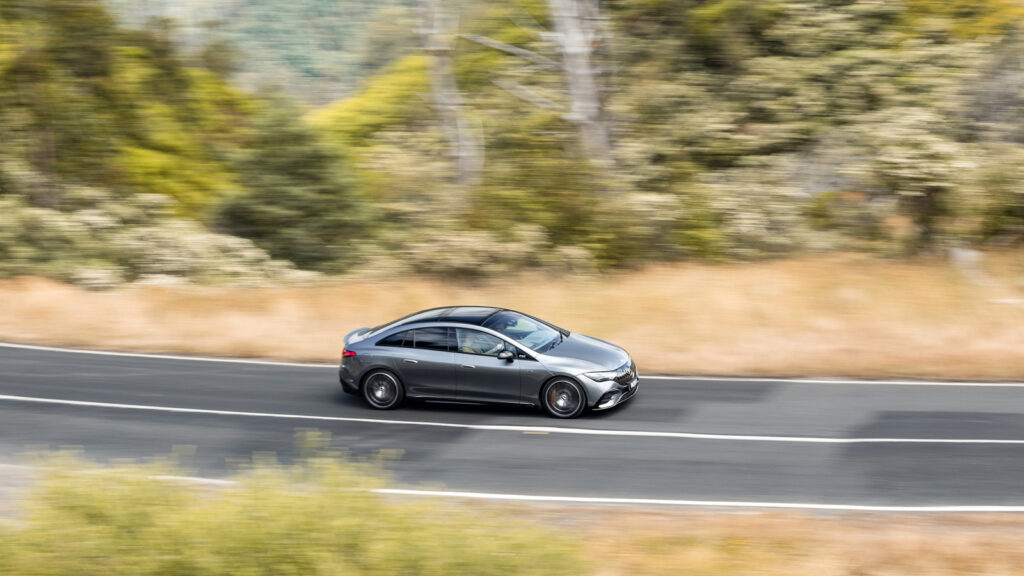
Charging
These EQE’s circa 90kWh batteries are big units. An 11kW AC charge using a 3-phase 16 amp wallbox power supply would do the job from empty to full in around 10 hours.
If you’re lumbered with a single-phase wallbox, you’d be looking at around 29 hours for a low-rated 3.6kW unit.
Owners should invest in Mercedes-Benz’s Wallbox 2.0 for easier and faster home charging. It has an AC charging output up to 22kW (you’ll need three-phase power), has smart Mercedes-Me app integration, and boasts Wi-Fi capability for over-the-air updates.
This wallbox will set you back a chunky $2475 plus installation, but EV charging habits suggest the vast bulk of owners will charge their EQE at home.
For those who do need a rapid charge, Mercedes claims the EQE adds 250km driving range in 15 minutes using a DC ultra-rapid charger, thanks to a 170kW charge rate.
Ride and handling
Very traditional Benzy. Refined and measured, they’re also blissfully quiet inside.
You have the choice of cosmic sounds, but the 300 and 350 are at their best in full silent mode for serene cruising.
The EQE 53 arguably needs a bit of theatre when you’re putting the shoe in. A “Powerful” sound from the menu brings some manufactured throatiness, and is certainly one of the most impressive artificial EV sounds I’ve experienced.
While the 300 and 350’s ride is plush for the most part, the steel coil suspension had a few dramas on some of the more chopped up corners we encountered.
It really felt its weight with some sideways jolts when hitting these bumps, and while the hits were jarring, the stability and traction systems did an impressive job of keeping things tidy.
You can option air suspension on the 300 and 350 for another $3800, which appears a solid investment. This Airmatic suspension with adaptive damping was deeply impressive on the EQE 53, proving the most settled and cosseting of the three cars we tested, despite its AMG badge and reputation.
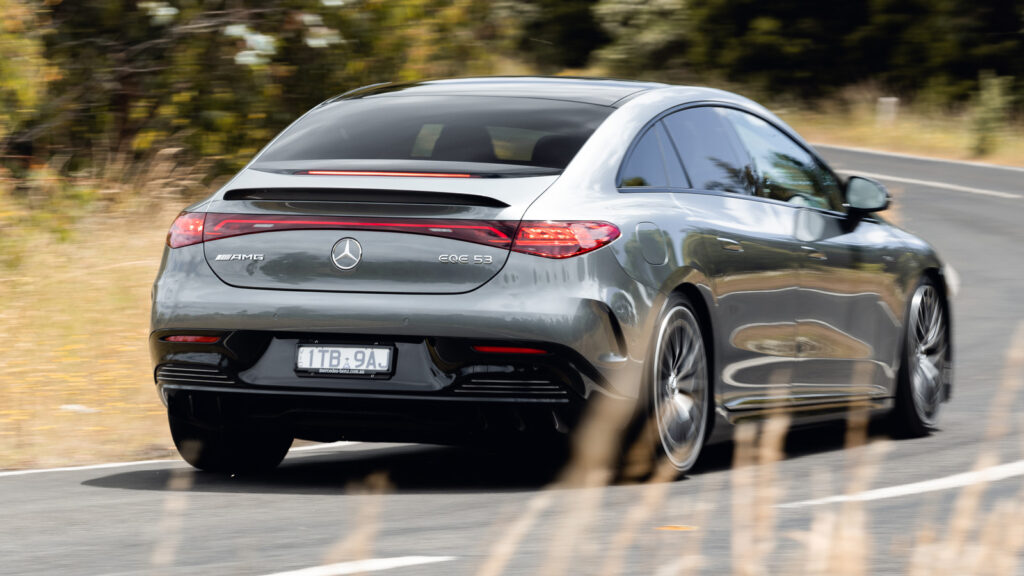
Well balanced, minimal body roll and reasonable ability to swiftly change direction was apparent in all. All the mass low down means handling’s top notch, but such weight means there’s never real outright driving thrills on offer.
The EQE 53 is, of course, the most impressive. You only need half throttle to fly between tight corners, and how this lump holds on through turns with barely a quiver is mystifying. Grip levels on Michelin Pilot Sport EV tyres, even in the wet, proved solid.
Less good is the EQE’s braking feel. It’s quite unnatural when shifting between regen and human-led force, meaning the driver loses some confidence and it’s not as silky-smooth as you’d expect from a Merc.
Regeneration itself isn’t aggressively harsh, but does spoil the smooth drive party. It’s best to turn it off entirely when on the open road, and flick the paddles to maximum regen for town use.
Talking point
The flush door handles are beautiful things to behold, and can be set to auto pop out as you approach with the key.
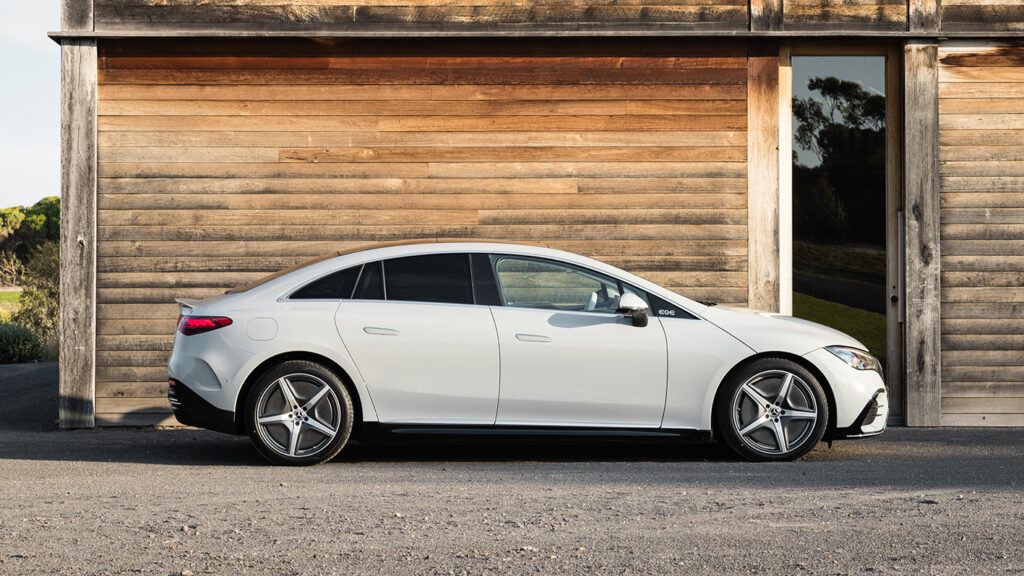
You can open them with touch instead, and there’s quite the technique. A tap won’t do the job, it’s more of a caress.
All there to help build a proper relationship with your EV?
Safety
The EQE’s just been awarded a 5 star ANCAP rating, following the same from Euro NCAP.
It scored 95 percent for adult occupant safety, 91 percent for child occupant safety, 83 percent for pedestrian protection and 80 percent for safety assist. All stellar figures.
Safety inclusions are comprehensive. There’s a total of 10 airbags, while the Driving Assistance Package Plus has Benz throwing the full suite at all EQEs.
Goodies include Active Brake Assist with cross-traffic function, Active lane change assist, Active blind spot assist, Active lane keeping assist, Evasive steering assist and Traffic Sign Assist.
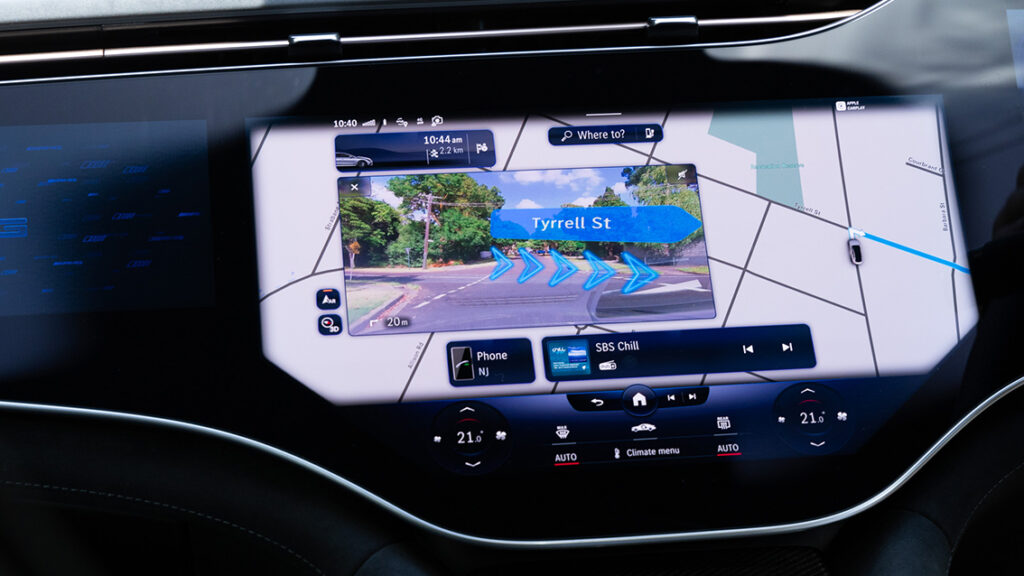
Merc’s one of the better brands at calibrating its comprehensive safety inclusions these days. Rarely was the drive interrupted by any vulgar beeping, harsh steering or over-excited flashing warnings.
Verdict
An electric sedan with few rivals – we can’t get the similar sized Tesla Model S at the moment; BMW’s i4 is a smaller sedan and the Audi e-tron GT and Porsche Taycan are a good chunk pricier than the EQE 300 and 350.
Rear seat and boot size aside, it’s an EV that works as a comfortable, luxe and massively well-equipped E-Class alternative. They may not look cheap on paper, but you really don’t feel hard done by thanks to the sumptuous interiors and drive quality.
The EQE 300 with optional air suspension looks the smartest choice, as for true exhilaration (and you’ll get it) the only way is the AMG 53 route.
The biggest barrier to this EQE sedan attracting buyers? The imminent arrival of the EQE SUV version. Pricier and with less electric range, it’s simply the body shape most Australians will plump for.
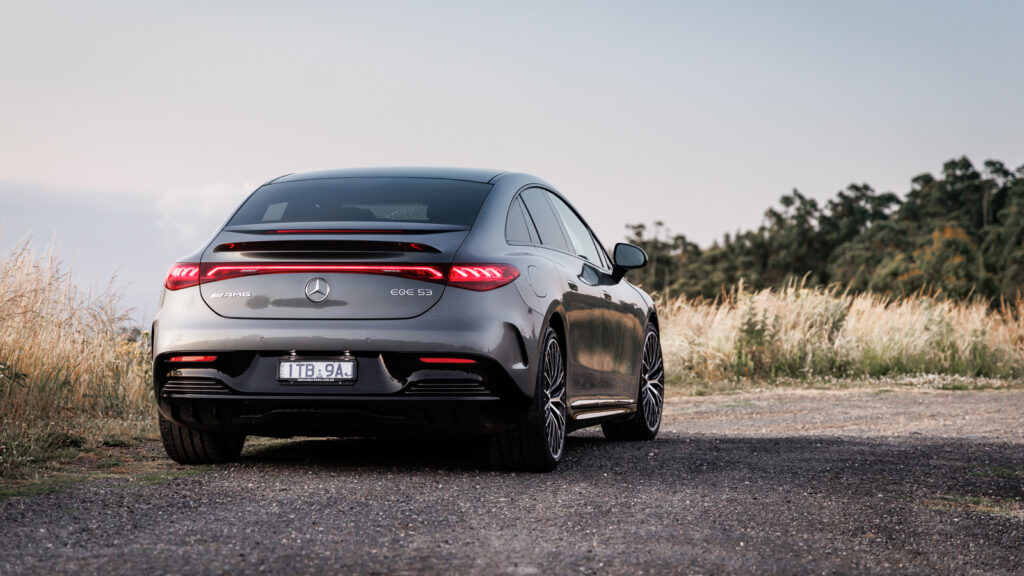
Mercedes-Benz EQE 300/350/AMG53 specifications
Price: From about $145,000 / $165,000 / $230,000 drive-away
Basics: EV, 5 seats, 4 doors, large sedan, RWD/AWD
Range: 508km / 462km / 435km (WLTP)
Battery capacity: 89kWh / 90.5kWh / 90.5kWh (usable)
Battery warranty: 10 years/250,000km (70 per cent remaining)
Energy consumption: 20.2 / 21.1 / 26kWh/100km
Motors: 1 rear 180kW/550Nm / dual 215kW/765Nm / dual 460kW/950Nm
AC charging: 11kW, Type 2 plug
DC charging: 170kW, CCS combo plug
0-100km/h: 7.3/6.3/3.5 seconds (3.3 with AMG Dynamic Plus package)

